The 30 Best Places to Live in New Hampshire: Granite State’s Top Communities

New Hampshire offers residents a unique combination of natural beauty, economic opportunity, and small-town charm that attracts people seeking quality of life in New England.
The Granite State features diverse communities ranging from historic seacoast towns to mountain villages, each with distinct characteristics that appeal to different lifestyles and priorities.
This comprehensive guide examines thirty top-rated New Hampshire communities, evaluating factors such as cost of living, schools, safety, and local amenities to help prospective residents make informed decisions.
From bustling college towns to peaceful lakeside retreats, these communities represent the best of what New Hampshire has to offer across various price points and geographic regions.
Here are the 30 best places to live in New Hampshire:
30. Alton
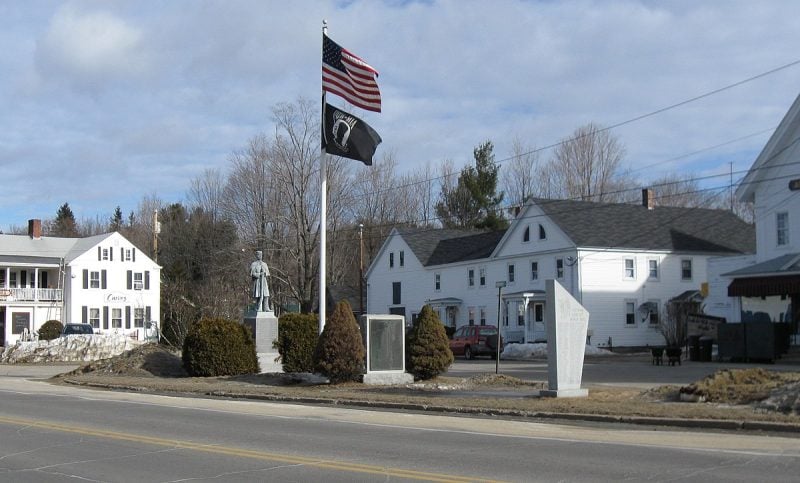
Alton sits in Belknap County within New Hampshire’s scenic Lakes Region. This small town has earned recognition for its exceptional quality of life and natural beauty.
The community receives an A+ overall ranking from BestPlaces, placing it among the top locations to live nationwide. Home prices in Alton remain below the state average of $295,170, making it an affordable option for residents.
The town’s location in the Lakes Region provides abundant outdoor recreation opportunities. Residents enjoy access to pristine lakes and surrounding wilderness areas.
Despite its small size, Alton maintains the essential amenities needed for comfortable living. The town combines rural charm with practical conveniences for daily life.
Alton appeals to those seeking a quiet community setting while remaining within reach of larger metropolitan areas when needed.
29. Littleton
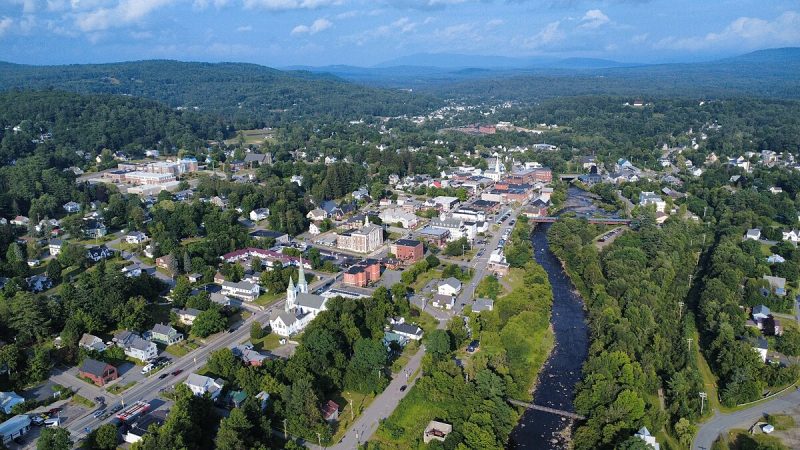
Littleton sits in New Hampshire’s White Mountains region near the Vermont border. The small city has a population of approximately 4,300 residents.
The downtown area features charming local businesses and scenic mountain views. Residents enjoy a welcoming community atmosphere in this picturesque setting.
Housing costs in Littleton remain below the state average of $295,170. This makes it an affordable option for those seeking mountain living without high expenses.
The city ranks well for quality of life factors across multiple categories. Cost of living and housing affordability stand out as particular strengths.
Littleton attracts singles and young professionals, with only 35% of residents over 15 being married. The demographic makeup is predominantly white at 97% of the population.
The location provides access to outdoor recreation opportunities throughout the White Mountains. Small-town charm combines with natural beauty to create an appealing living environment.
28. Waterville Valley
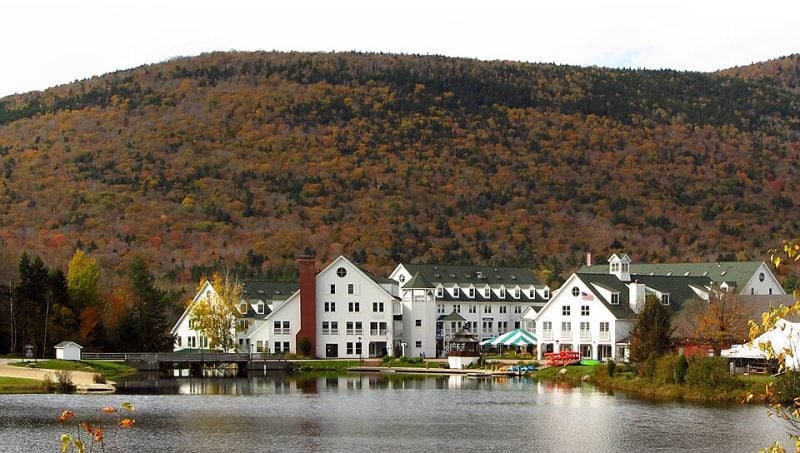
Waterville Valley sits nestled in the White Mountains with a population of 269 residents. The town offers a dense suburban feel where most residents own their homes.
Located in Grafton County, this charming community provides excellent access to outdoor recreation. Winter brings world-class skiing opportunities with miles of groomed cross-country trails and alpine skiing.
Home prices align closely with New Hampshire’s state average of $295,170. The real estate market reflects the town’s desirability as a mountain retreat destination.
Waterville Valley’s town square serves as the central hub for shopping, dining, and lodging. Residents enjoy easy access to hiking trails, skiing, and other mountain activities year-round.
The community attracts people seeking a balance between small-town living and outdoor adventure. Political views tend to be moderate among residents in this mountain town setting.
27. Stratham
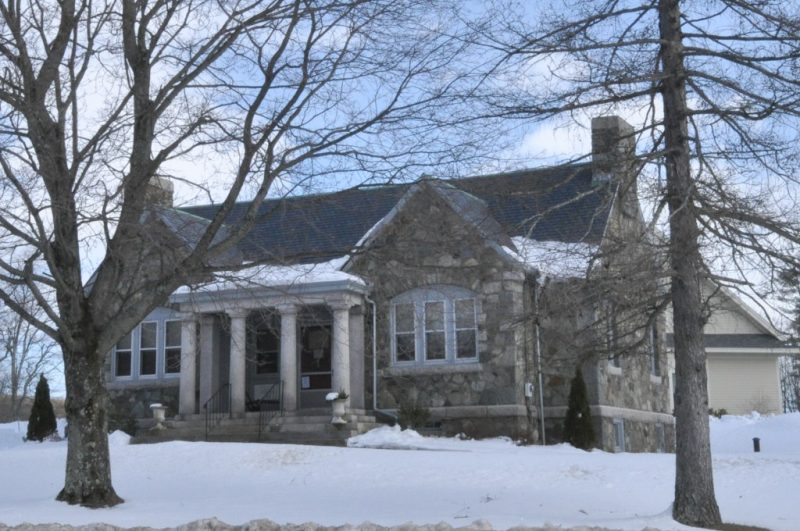
Stratham is a small town in southeastern New Hampshire with approximately 7,600 residents. The community sits in Rockingham County near the borders with Maine and Massachusetts.
The town earns high livability rankings for its public schools and low crime rates. Stratham ranks 12th out of 109 New Hampshire communities for raising families.
Residents enjoy a close-knit community atmosphere where neighbors know each other well. The town offers various outdoor activities including hiking trails and parks for recreation.
Cultural amenities include museums, art galleries, and music venues. These attractions provide entertainment options for different interests and age groups.
Stratham’s location provides convenient access to larger cities like Portsmouth and Manchester. The town maintains its small-town charm while offering proximity to urban amenities and employment opportunities.
26. Hampton
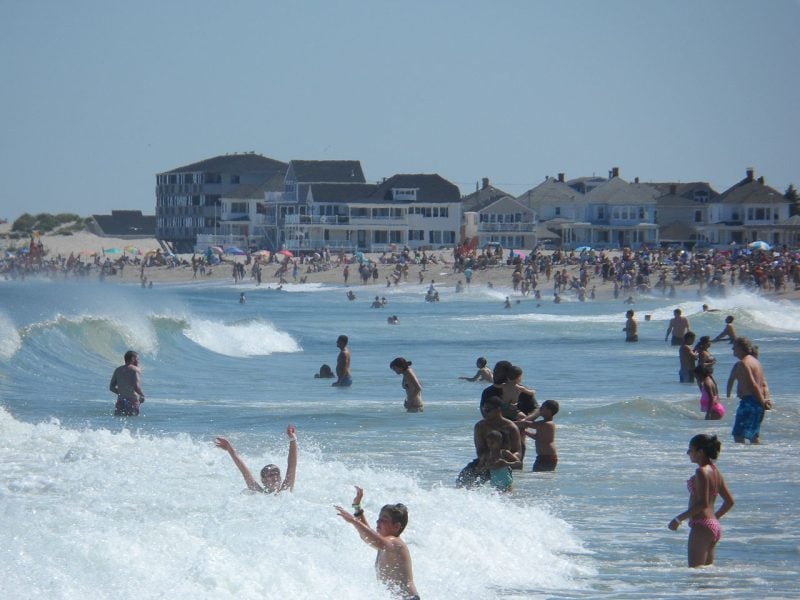
Hampton sits along New Hampshire’s southeastern coast, offering residents direct access to the Atlantic Ocean. The town consistently ranks among the state’s top places to live due to its coastal location and community amenities.
The area provides a mix of year-round residents and seasonal visitors. Hampton Beach attracts tourists during summer months, creating a vibrant atmosphere with restaurants and entertainment options.
Housing costs reflect the desirable coastal location. The town offers various property types, from beachfront homes to more affordable inland options.
Hampton maintains good transportation connections to larger cities in New Hampshire and Massachusetts. Commuters benefit from reasonable access to employment centers in the region.
The community features local schools and recreational facilities. Residents enjoy ocean activities, fishing, and seasonal events throughout the year.
25. Pelham
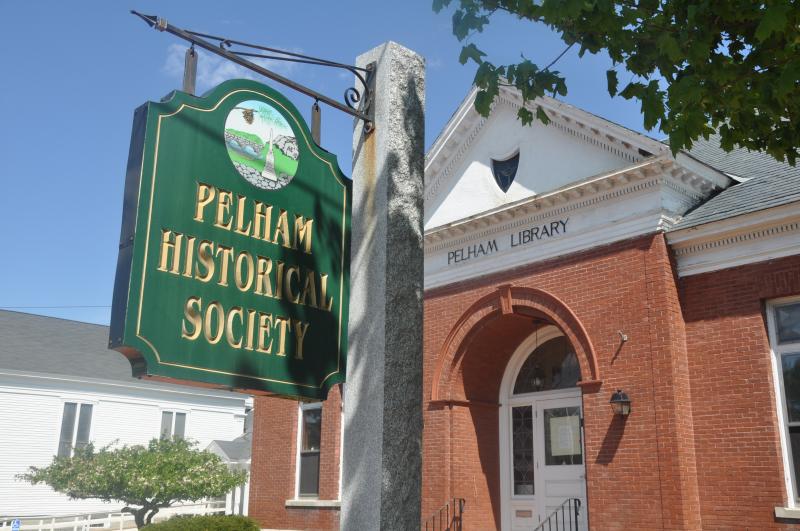
Pelham sits in southern New Hampshire along the Massachusetts border. This small town provides residents with a quiet environment compared to neighboring communities.
The town offers outdoor recreational opportunities including hiking trails at Childs Park and golf courses. Pelham Dam Pond serves as another scenic spot for local activities.
Historic attractions include the Pelham Congregational Church, built in 1795. The town maintains its quintessential New Hampshire character while supporting an active community.
Housing costs in Pelham exceed the state average of $295,170. The proximity to Massachusetts makes it attractive to residents seeking New Hampshire’s tax advantages.
Pelham functions as both a residential community and business center. Residents benefit from tax-free shopping opportunities that draw visitors from Massachusetts.
The town’s location southwest of Manchester provides access to larger metropolitan amenities while maintaining small-town appeal.
24. Wolfeboro

Wolfeboro sits on the shores of Lake Winnipesaukee and holds the distinction of being America’s oldest summer resort. The town has a population of approximately 6,500 residents.
The lakeside location provides stunning views of both the water and surrounding mountains. Residents enjoy access to boat rides, hiking trails, and golf courses throughout the area.
Downtown Wolfeboro features restaurants, coffee shops, and shopping options. The town maintains its small-town charm while offering modern amenities.
Housing costs run higher than the state average, with median home prices around $400,000. The median household income sits near $60,000, slightly above New Hampshire’s average.
The community attracts many retirees and offers a suburban-rural lifestyle. Most residents own their homes rather than rent.
Wolfeboro’s public schools rank above average compared to other districts statewide. The town provides numerous parks and recreational facilities for families.
23. Barrington
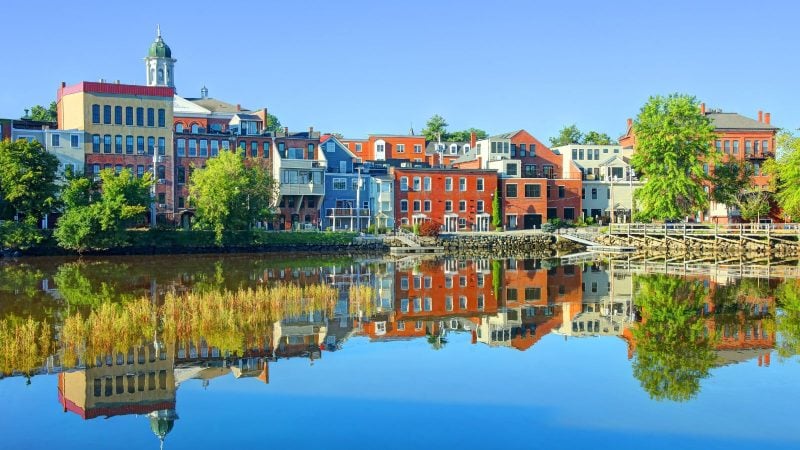
Barrington sits in southeastern New Hampshire, offering residents a blend of natural beauty and small-town charm. The town attracts families seeking outdoor recreation opportunities including fishing, hiking, and camping.
The community maintains an excellent school system that draws parents looking for quality education. Crime rates remain low, contributing to the town’s reputation as a safe place to raise children.
Home prices in Barrington align closely with New Hampshire’s state average of $295,170. This pricing makes the town accessible to middle-income buyers without the premium costs of some coastal communities.
Residents enjoy access to scenic landscapes while remaining within commuting distance of larger employment centers. The town’s rural character appeals to those seeking space and tranquility.
Barrington ranks moderately among New Hampshire communities for diversity and professional opportunities. The town provides a solid foundation for families prioritizing safety, education, and outdoor lifestyle.
22. Merrimack

Merrimack stands out as one of New Hampshire’s most desirable communities. Money Magazine recognized the town by ranking it #23 in their “100 Best Places to Live” list.
The town offers residents an excellent quality of life with strong local amenities. Its location provides convenient access to major highways and urban centers while maintaining a distinct community character.
Merrimack’s economy benefits from a concentration of technology-based companies. These businesses provide substantial employment opportunities for local residents and contribute to the area’s economic stability.
Housing costs in Merrimack exceed the New Hampshire state average of $295,170. This higher price point reflects the town’s desirability and market demand from prospective residents.
The community successfully balances residential appeal with business opportunities. Families particularly value the town’s safe environment and proximity to recreational activities throughout the region.
21. Rindge
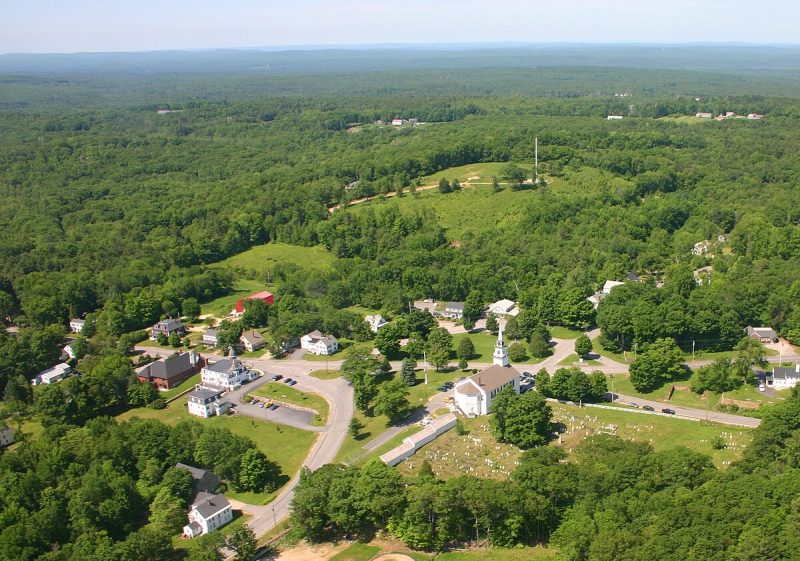
Rindge sits in southwestern New Hampshire near the Massachusetts border. The town offers a rural atmosphere with forests, lakes, and rolling hills throughout the area.
Franklin Pierce University anchors the community as a major employer and educational institution. The campus brings energy and cultural activities to this otherwise quiet town.
Outdoor enthusiasts appreciate Cathedral of the Pines, a peaceful memorial site with walking trails and scenic views. The town also provides access to several ponds for fishing and kayaking.
Rindge maintains a small-town feel with local businesses along Route 119. Housing costs remain reasonable compared to more populated areas in southern New Hampshire.
The community hosts annual events like Old Home Day that bring residents together. Families often choose Rindge for its safe environment and connection to nature while staying within commuting distance of larger cities.
20. Salem
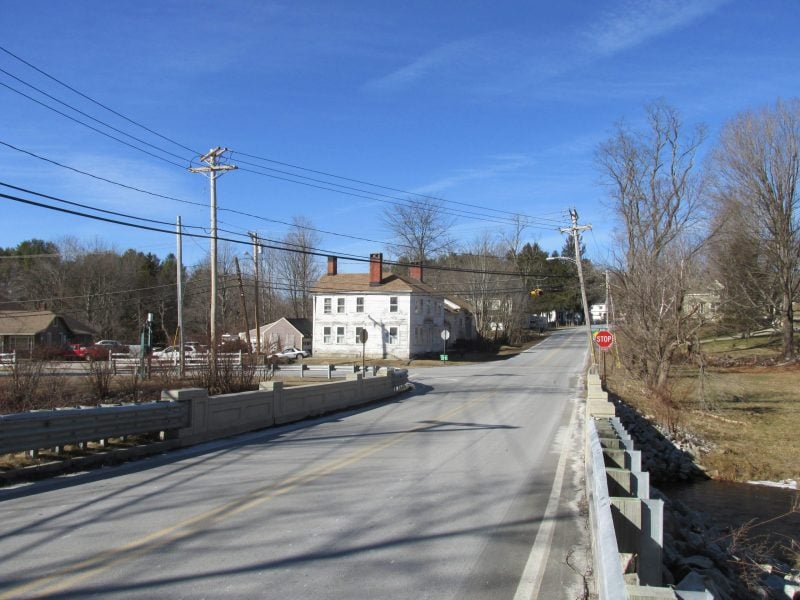
Salem stands out as New Hampshire’s premier destination for those seeking small-town charm with urban accessibility. The town offers residents easy access to Boston while maintaining its distinctive New England character.
Money Magazine recognized Salem as one of America’s 50 Best Places to Live, making it the only New Hampshire community to receive this honor. The recognition highlights Salem’s unique combination of livability factors.
Home prices in Salem exceed the state average of $295,170, reflecting strong market demand. The higher costs correspond with desirable neighborhoods that attract families and professionals.
Salem features historical architecture and maintains America’s Stonehenge as a local attraction. Fresh air and scenic landscapes complement the town’s cultural offerings.
The community benefits from New Hampshire’s low tax burden while providing residents with cafes, theaters, and shops. Salem successfully balances economic advantages with quality-of-life amenities that appeal to diverse demographics.
19. Hollis
Hollis stands out as one of New Hampshire’s premier small towns with just over 3,000 residents. The community offers a perfect blend of rural charm and modern amenities.
Home prices in Hollis exceed the state average of $295,170, reflecting the area’s desirability. The higher property values indicate strong market demand and neighborhood quality.
Residents enjoy lush, green forests and abundant outdoor recreation opportunities. The town maintains its rural character while providing access to essential services and amenities.
The community is known for friendly, welcoming residents who contribute to a strong sense of neighborhood cohesion. Public safety and low crime rates make Hollis particularly attractive to families.
Hollis provides easy access to larger cities while maintaining its small-town atmosphere. The location offers the best of both worlds for those seeking peaceful living with urban conveniences nearby.
18. Durham
Durham consistently ranks among New Hampshire’s top places to live. The town earned fifth place in recent state rankings due to its exceptional quality of life and strong community amenities.
The local school system stands out as one of New Hampshire’s finest public school districts. Families choose Durham specifically for these educational opportunities and the town’s commitment to academic excellence.
Safety remains a key advantage for residents. Durham maintains low crime rates that contribute to its reputation as one of the state’s safest communities.
The town offers a robust economy with diverse employment opportunities. Residents benefit from strong job markets and economic stability that support long-term financial planning.
Durham provides abundant recreational activities and green spaces throughout the community. These outdoor amenities enhance the overall living experience for residents of all ages.
17. Gilford
Gilford stands out as one of New Hampshire’s premier communities with a population of 7,785 residents. The town sits in Belknap County within the scenic Lakes Region of central New Hampshire.
Located 30 miles north of Concord and 40 miles northwest of Manchester, Gilford offers convenient access to major cities. The community provides a suburban-rural atmosphere where most residents own their homes.
The town boasts excellent schools that consistently earn high ratings from families. Residents enjoy access to numerous restaurants, coffee shops, and parks throughout the area.
Gilford’s location near Lake Winnipesaukee and Gunstock Ski Resort creates year-round recreational opportunities. Tourism and healthcare serve as the primary industries supporting the local economy.
Home prices in Gilford align closely with the state average of $295,170. The community ranks highly for cost of living, job growth, and median household income compared to other New Hampshire towns.
16. Newmarket
Newmarket offers residents a blend of small-town charm and suburban convenience in Rockingham County. The town has a population of approximately 9,431 people and maintains a tight-knit community atmosphere.
The area features numerous parks, trails, and outdoor recreational opportunities. Residents enjoy access to local coffee shops and downtown boutiques that contribute to the town’s walkable character.
Newmarket’s poverty rate stands at 7%, which is notably lower than the national average. The typical household earns around $69,259 annually, slightly above the national median income.
Housing prices align closely with New Hampshire’s state average of $295,170. Most residents own their homes, creating stability in the local neighborhoods.
The town provides quality educational options and maintains low crime rates. Its location offers easy access to natural areas while remaining connected to modern amenities and services.
15. Peterborough
Peterborough ranks as the third-best place to retire in New Hampshire and holds the third position among the best places to live in Hillsborough County. This small town houses 2,971 residents along the Contoocook River.
The community sits just north of the Massachusetts border, providing easy access to nearby cities while maintaining a quiet rural atmosphere. Peterborough offers a strong blend of community spirit, outdoor recreation opportunities, and arts programming.
The median home price reaches $335,200, with home values appreciating 7.9% over the past decade. Housing costs align closely with New Hampshire’s state average of $295,170.
The town maintains a poverty rate of 10.4%, which falls 26% below the national average. Typical households earn $60,324 annually, slightly below the national median of $67,500.
Residents face some challenges with limited job availability and rising housing costs in this picturesque community.
14. Meredith
Meredith sits between Lake Waukewan and Lake Winnipesaukee in Belknap County. This town of 6,706 residents offers a suburban rural atmosphere.
The community attracts many retirees seeking a peaceful lakeside setting. Most residents own their homes rather than rent.
Meredith evolved from an 18th-century mill town into a modern retirement haven and resort destination. The lakes provide recreational opportunities year-round.
Home prices exceed New Hampshire’s state average of $295,170. The higher cost reflects the desirable lakefront location and amenities.
Public schools in Meredith perform above average compared to state standards. This makes the town appealing to families with children.
The town receives a livability score of 69 out of 100 based on various factors. These include amenities, safety, education, and employment opportunities.
Residents tend to lean conservative politically. The lakeside location provides both natural beauty and recreational activities for all ages.
13. Rye
Rye stands out as one of New Hampshire’s most desirable coastal communities with a population of approximately 4,400 residents. This small town offers direct access to the Atlantic Ocean, making it perfect for swimming and waterfront activities during summer months.
The town provides excellent opportunities for outdoor recreation year-round. Residents enjoy biking along scenic coastal routes and exploring local nature trails, particularly during fall when foliage creates stunning landscapes.
Housing costs in Rye exceed the state average of $295,170, reflecting the premium location and coastal access. The higher real estate prices indicate strong market demand for this seaside community.
Rye attracts residents seeking a quieter lifestyle away from urban centers while maintaining proximity to outdoor amenities. The combination of ocean access, natural beauty, and small-town atmosphere makes it appealing to those prioritizing quality of life over affordability.
12. Milford
Milford stands out as one of New Hampshire’s most desirable suburban communities. Located in Hillsborough County, this town offers residents a dense suburban atmosphere with excellent amenities.
The community maintains a low crime rate and attracts families seeking safety. Most residents own their homes, creating stable neighborhoods throughout the area.
Milford provides abundant dining options, coffee shops, and recreational parks. The town serves as a suburb of Manchester while maintaining its distinct character.
Young professionals and families make up a significant portion of the population. The area offers quality schools and educational resources for residents.
Local amenities include libraries, shops, and restaurants that serve both residents and visitors. The town’s location provides easy access to southern New Hampshire’s attractions.
Milford combines small-town charm with suburban convenience. Residents enjoy friendly neighbors and participate in community activities throughout the year.
11. Concord
Concord serves as New Hampshire’s capital city, established in 1733 with deep historical significance in America’s founding. The city ranks consistently among the best places to live in the United States.
Residents enjoy abundant parks, waterways, and outdoor recreation opportunities throughout the area. The city maintains a low crime rate that attracts families seeking safe communities.
Concord offers excellent educational opportunities and strong public schools. The local culture emphasizes community connection and historical preservation.
Housing costs remain below the state average of $295,170, making homeownership more accessible. The real estate market reflects stable demand in desirable neighborhoods.
The downtown area features local amenities, dining options, and cultural attractions. Concord’s location provides easy access to other New Hampshire destinations while maintaining small-city charm.
10. Nashua
Nashua stands as New Hampshire’s second-largest city and consistently ranks among the state’s top places to live. The city sits in southern New Hampshire near the Massachusetts border, offering convenient access to major metropolitan areas.
The downtown area has undergone significant revitalization in recent years. Young professionals gravitate toward the apartments and condos available in this urban core.
Nashua provides diverse housing options across distinct neighborhoods. The North End features quiet residential streets with larger homes and spacious lots. The South End combines historic properties with newer developments.
Employment opportunities remain strong with low unemployment rates throughout the region. The city’s location provides easy commuting access to both New Hampshire and Massachusetts job markets.
Winter weather brings challenges with January temperatures dropping to 18 degrees Fahrenheit. However, residents benefit from New Hampshire’s tax advantages and quality of life amenities that make Nashua an attractive place to call home.
9. Windham
Windham ranks as the second-best suburb to live in New Hampshire and third-best place overall in the state. This small town in Rockingham County has a population of 11,895 residents.
The community sits within the Greater Boston metropolitan area, offering convenient access to urban amenities. Windham maintains its appeal through strong family-oriented values and excellent educational opportunities.
Home prices in Windham exceed the state average of $295,170, reflecting high demand for this desirable location. The premium pricing indicates the area’s quality and desirability among homebuyers.
Windham’s school system attracts many families to the area. The town prioritizes education, making it particularly appealing to parents seeking quality schooling options for their children.
The combination of location, schools, and community atmosphere makes Windham a sought-after destination in New Hampshire.
8. Bedford
Bedford stands out as one of New Hampshire’s most desirable communities. This affluent town in Hillsborough County houses approximately 22,000 residents.
The town boasts an exceptional safety record. Crime rates sit 79% lower than the national average, making it one of America’s safest places to live.
Bedford’s school system draws many families to the area. The public schools maintain high academic standards and strong reputations throughout the state.
Located north of Manchester, Bedford offers convenient access to urban amenities while maintaining its scenic character. Residents enjoy picturesque forests, rivers, and hiking trails throughout the area.
The town features excellent recreational facilities including golf courses and extensive trail networks. These outdoor amenities complement the natural beauty that defines the region.
Home values in Bedford exceed the state average of $295,170, reflecting the community’s desirability and quality of life.
7. Amherst
Amherst ranks as the 4th best place to live in New Hampshire according to 2025 data. This Hillsborough County town maintains a population of approximately 11,201 residents.
The community receives an A+ rating for jobs and education opportunities. Residents benefit from strong employment prospects and quality educational institutions.
Home prices exceed the state average of $295,170, reflecting the area’s desirability. The higher costs correspond with the town’s premium location and amenities.
Amherst offers easy access to Manchester while preserving its rural character. Residents enjoy small-town charm with big-city conveniences nearby.
The town provides numerous outdoor recreation opportunities throughout the year. Shopping and dining options are readily available to residents.
Amherst fosters a strong sense of community among its residents. The peaceful environment attracts families seeking a serene lifestyle near urban centers.
6. Londonderry
Londonderry stands out as a top suburban community in Rockingham County with approximately 26,000 residents. The town offers a sparse suburban feel where most residents own their homes.
Located near Manchester and within commuting distance of Greater Boston, Londonderry attracts families and professionals. The community features numerous coffee shops and parks that enhance daily life.
The town ranks sixth among New Hampshire’s best places to live according to livability studies. Home prices exceed the state average of $295,170, reflecting the area’s desirability.
Londonderry’s excellent schools contribute to its family-friendly reputation. The poverty rate sits at just 2.6%, significantly below national levels.
The typical household earns $107,813 annually, well above the national median. This higher income level supports the community’s quality of life and amenities.
5. Exeter
Exeter ranks as the third-best place to live in New Hampshire according to recent rankings. The town offers residents a dense suburban feel with a population of approximately 16,000 people.
The community attracts many retirees and families seeking quality education. Exeter’s public schools maintain highly rated status throughout the state.
Home prices in Exeter exceed the state average of $295,170. Most residents own their homes rather than rent.
The town maintains a low crime rate, contributing to its desirability. Exeter sits in Rockingham County and features a picturesque Main Street with historic charm.
Phillips Exeter Academy, a prestigious preparatory school, calls this town home. The institution adds to the area’s educational reputation and cultural offerings.
Residents enjoy access to local stores, restaurants, and community activities. The town blends New England traditions with modern amenities effectively.
4. Dover
Dover provides residents with a dense suburban atmosphere complemented by numerous restaurants, coffee shops, and parks. The city ranks among New Hampshire’s top places to live due to its variety of activities and below-average cost of living.
Home prices in Dover exceed the state average of $295,170. The higher property values reflect the desirability of the area’s neighborhoods and amenities.
Located east of Concord, Dover features the Cocheco River Walk with extensive trail systems. These paths wind through diverse landscapes, offering outdoor recreation opportunities for residents and visitors.
The city maintains an active cultural scene through local theaters and regular festivals. These events contribute to Dover’s community engagement and entertainment options throughout the year.
Dover combines suburban convenience with recreational and cultural amenities, making it attractive for families and professionals seeking quality living in New Hampshire.
3. Keene
Keene stands out as one of New Hampshire’s most livable small cities with a population of approximately 23,000 residents. The city earned an impressive overall livability score of 78 out of 100, ranking it among the state’s top places to live.
Located in southwestern New Hampshire’s Cheshire County, Keene offers residents a dense suburban atmosphere. Most residents own their homes and enjoy access to numerous restaurants, coffee shops, and parks throughout the city.
The city attracts many young professionals drawn to its vibrant downtown area and abundant opportunities. Residents benefit from a lower-than-average cost of living compared to other New England cities.
Keene’s central New England location provides easy access to major metropolitan areas including Boston, Hartford, Montreal, and New York City. This strategic positioning combines small-city charm with convenient connectivity to larger urban centers.
2. Hanover
Hanover stands out as one of New Hampshire’s premier places to live. This Upper Valley town hosts Dartmouth College, creating a vibrant academic atmosphere.
The community of 8,744 residents enjoys exceptional safety ratings. FBI data shows Hanover ranks as the safest place in New Hampshire.
Governor Benning Wentworth incorporated the town in 1761. European settlers from Connecticut arrived by 1765, establishing farming as the area’s foundation.
Downtown Hanover features numerous cafes, shops, and restaurants. The college town atmosphere provides cultural amenities and educational opportunities.
Residents benefit from proximity to major Northeast cities like Boston. This location offers small-town charm with urban accessibility.
The town combines excellent public safety with strong educational resources. These factors contribute to Hanover’s reputation as New Hampshire’s top living destination.
1. Portsmouth
Portsmouth stands as New Hampshire’s premier coastal city, combining historic charm with modern amenities. The city features colorful shops, art galleries, and diverse restaurants that attract residents and visitors alike.
Home prices in Portsmouth exceed the state average of $295,170, reflecting the area’s desirability. The higher cost reflects strong market demand for this coastal location.
Portsmouth ranks among the few New Hampshire cities with a substantial young adult population. This demographic creates an active nightlife scene uncommon elsewhere in the state.
The city earned recognition on Fortune’s Best Places to Live for Families list for two consecutive years. It also appears on retirement affordability rankings for 2025.
According to BestPlaces, Portsmouth receives an overall ranking of 63 out of 100. The city ranks 29th statewide for amenities and 30th for cost of living considerations.
Factors That Make New Hampshire Desirable
New Hampshire attracts residents with its combination of safety, economic opportunity, and natural beauty. The state offers reasonable living costs compared to neighboring regions while maintaining access to extensive outdoor recreation and strong community amenities.
Quality of Life
New Hampshire consistently ranks among the safest states in the nation. Crime rates remain significantly below national averages across most communities.
The state maintains excellent educational systems. Many districts receive high ratings for academic performance and graduation rates.
Healthcare access proves strong throughout New Hampshire. Residents benefit from quality medical facilities and shorter wait times compared to more densely populated areas.
Community features that enhance daily living:
Low traffic congestion in most areas
Short commute times
Clean air and water quality
Strong local governance
Active civic engagement
The state’s compact size allows residents to access urban amenities while maintaining small-town atmospheres. Most communities offer walkable downtown areas with local businesses and restaurants.
Cost of Living
Housing costs in New Hampshire remain more affordable than Massachusetts or Connecticut. Property taxes vary by municipality but often provide good value for services received.
The state levies no income tax or sales tax. This tax structure helps offset higher property taxes in some areas.
Key cost considerations:
Median home prices vary significantly by region
Utilities costs run slightly above national averages
Gasoline prices typically match regional rates
Healthcare costs remain competitive
Employment opportunities span multiple sectors. The state maintains low unemployment rates and attracts businesses seeking proximity to Boston markets without Massachusetts tax burdens.
Energy costs fluctuate seasonally due to heating demands. Many residents use heating oil or propane, which affects winter budgets.
Recreation and Outdoor Activities
The White Mountains provide year-round recreation opportunities. Skiing, hiking, and camping attract both residents and tourists to the region.
New Hampshire offers extensive lake access. The state contains over 1,000 lakes and ponds for swimming, boating, and fishing activities.
Popular outdoor activities include:
Downhill and cross-country skiing
Mountain biking and hiking trails
Lake and river recreation
Hunting and fishing
Rock climbing and mountaineering
The state maintains numerous state parks and forests. These areas provide affordable access to outdoor recreation close to residential areas.
Seasonal activities define much of the recreational calendar. Fall foliage viewing, winter sports, and summer lake activities create year-round engagement with natural environments.
Proximity to ocean access adds coastal recreation options. Beach activities and saltwater fishing complement inland opportunities.
Considerations When Choosing a Place to Live
Moving to New Hampshire requires careful evaluation of factors that directly impact daily life and long-term satisfaction. Transportation access, educational quality, and local community characteristics shape the living experience in any New Hampshire town or city.
Commute and Accessibility
Highway Access plays a crucial role in New Hampshire living. Communities near Interstate 93, Interstate 89, or Route 16 offer better connectivity to major employment centers like Manchester, Nashua, and Portsmouth.
Proximity to Massachusetts border towns provides access to Boston-area jobs. Towns like Salem, Pelham, and Plaistow attract commuters seeking New Hampshire’s tax advantages while maintaining career opportunities.
Public transportation remains limited throughout most of New Hampshire. The state lacks comprehensive bus or rail systems, making personal vehicle ownership essential for most residents.
Rural areas may face challenges with internet connectivity and cell phone coverage. Mountain and heavily forested regions sometimes experience service gaps that affect remote work capabilities.
Winter weather significantly impacts travel conditions. Communities with reliable snow removal services and well-maintained roads provide safer commuting during New Hampshire’s harsh winters.
School Districts and Education
New Hampshire’s education system varies considerably between districts. Property values correlate strongly with school district performance, affecting both families with children and investment potential.
Towns like Hanover, Bedford, and Hollis consistently rank among the state’s top-performing districts. These communities typically feature higher property taxes that fund superior educational resources and facilities.
Student-to-teacher ratios differ significantly across districts. Smaller towns often provide more individualized attention, while larger districts may offer broader course selections and extracurricular programs.
Private school options concentrate in southern New Hampshire near population centers. Rural areas typically rely entirely on public education systems.
School choice policies allow some flexibility, but transportation to alternative schools often becomes a family responsibility. Geographic constraints limit practical options for many New Hampshire residents.
Community Culture
Small-town character defines much of New Hampshire’s appeal. Town meetings, local festivals, and community involvement remain central to many municipalities’ identity and decision-making processes.
Seasonal tourism affects certain communities significantly. Towns near ski areas, lakes, or the seacoast experience population fluctuations that impact local businesses and housing availability.
Religious and political diversity varies by region. Southern New Hampshire tends toward more diverse populations, while northern rural areas often maintain more homogeneous communities.
Local amenities reflect community priorities and demographics. Some towns emphasize outdoor recreation with extensive trail systems, while others focus on historic preservation or arts programming.
Age demographics influence community activities and services. Retirement-friendly communities like New London offer different cultural experiences compared to family-oriented towns like Exeter.





